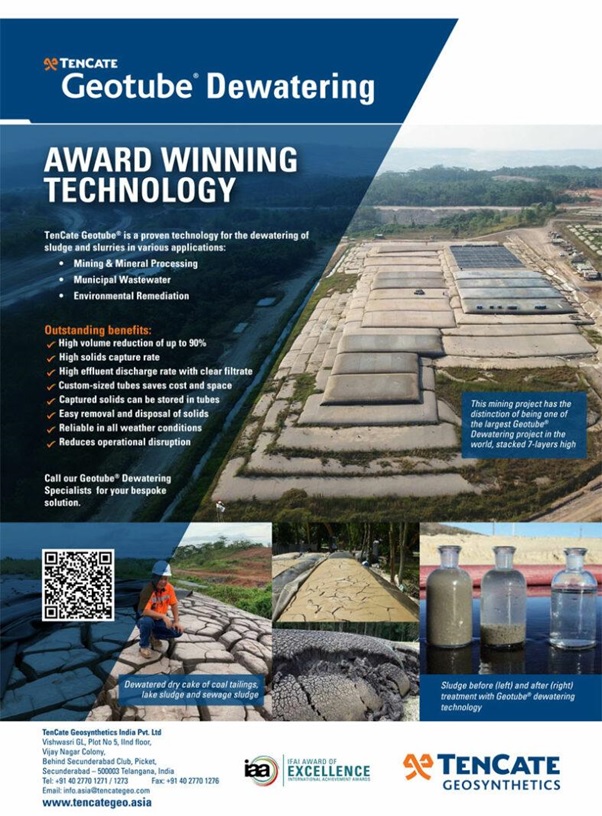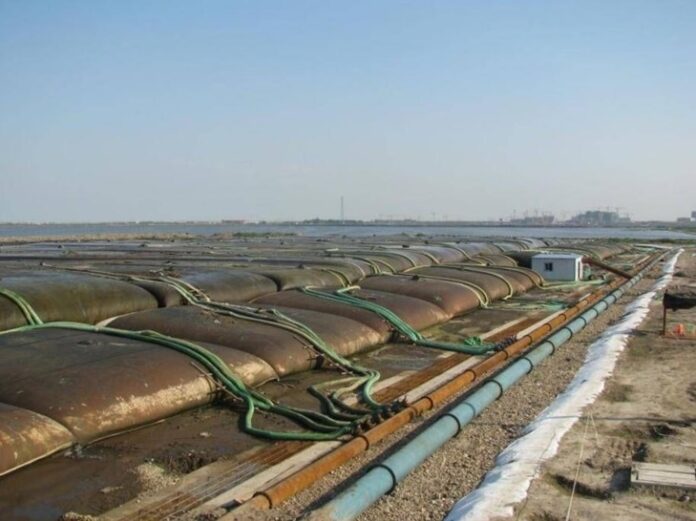Tianjin Eco-City is a new development in China and is a strategic cooperation between China and Singapore aiming to improve the living environment and build an eco-culture that will serve as a role model for future developments. In one of the development sites is a 3.0 km2 wastewater impoundment lake that has been receiving wastewater discharges from nearby domestic, agricultural and industrial sources since 1976. Integral to the development of Tianjin Eco-City is the plan to remediate the wastewater impoundment lake that is now laden with contaminated sediments.
The focus of scientific and regulatory concern centers on five major types of contaminants with sediments
- Nutrients: phosphorus and nitrogen compounds such as ammonia.
- Organic hydrocarbons: e.g. oil and grease;
- Halogenated hydrocarbons: e.g. dichloro-diphenyl-trichloroethane (DDT), polychlorinated biphenyls (PCBs), and dioxins;
- Polycyclic aromatic hydrocarbons (PAHs): e.g. petroleum and petroleum by-products;
- Metals: e.g. iron, manganese, lead, cadmium, zinc, and mercury, and metalloids such as arsenic and selenium
Some contaminants, such as most metals, are hazardous primarily because of direct toxicity. Although some metals do accumulate in bioaccumulate, generally they do not significantly increase in concentration as they are passed up the food chain. Others, called persistent bio accumulative toxics, are basically the primary cause of concern.

As part of the lake remediation efforts, a Geotextile tube dewatering facility was constructed to contain and dewater dredged sediments from the lake of 2.4 million m3 of sludge volume with a solids concentration of 10% with the specific gravity of solids ranging from of 1.8 to 2.0.

The dewatering platform was constructed over an area of approximately 120,000 m2, which was reclaimed from the lake. To improve the bearing capacity of the foundation for the dewatering platform two layers of high tenacity woven polyester geotextile were used as basal reinforcement and construct an impermeable platform set up to prevent effluent infiltration into the ground.

A total of more than 300 geotextile tubes were used to contain and dewater the dredged sediments. The geotextile tubes were stacked to four layers high. Upon completion of dewatering, the geotextile dewatering facility was capped over and vegetated. The contaminated water in the wastewater impoundment lake was treated at the new water treatment for Tianjin Eco-City. The capped over facility was transformed into a recreational park that overlooks the remediated lake.
Hence, based on volume reduction ratio the 2,400,000 m3 of moderately contaminated lake bottom sediments will reduce to about 390,000 m3 of dewatered solids remaining in the Geotube® dewatering units. This volume reduction ratio was used to engineer the sizes and stacking of Geotube® dewatering units to form the core of the landscaped mound.


TenCate Geotube® system Benefits;
- Low Capital Investment option.
- Captures solids to an estimated range* of 90% to 98% at 95% confidence level.
- Easy scale up to handle large volumes of sludge in minimal investment and time.
- Does not pose any health hazard and reduces odour problems and is operated noise-free.
How TenCate Geotube® Technology Works?

Dewatering with TenCate Geotube® technology is a three-step process:
Step 1: Filling
Sludge (slurry material) is pumped into the TenCate Geotube® container. Environmentally-safe polymers are added to the sludge, which makes the solids bind together and water separate. The TenCate Geotube® container’s unique fabric confines the fine grains of the material.
Step 2: Dewatering
Clear effluent water simply drains from the TenCate Geotube® container through the small pores in the specially engineered textile. This results in effective dewatering and efficient volume reduction of the contained materials. The volume reduction allows for repeated filling of the TenCate Geotube® container. Over 99% of solids are captured, and clear filtrate can be collected and recirculated through the system. The decanted water is often of a quality that can be reused/returned for processing or returned to native waterways without additional treatment.
Step 3: Consolidation
After the final cycle of filling and dewatering, the solids remain in the bag and continue to densify due to desiccation as residual water vapor escapes through the fabric. Volume reduction can be as high as 90 percent. When full, the TenCate Geotube® container and contents can be deposited at a landfill, remain on-site, or the solids can be removed and land-applied when appropriate.
Geotube® dewatering containers are prefabricated using high strength and quality seaming techniques into tubular, bag-like, or other forms with filling ports or other provisions for site filling.
TenCate Engineers can assist you with any of your enquiries on similar requirements and can be contacted at info.asia@tencategeo.com.
To know more about the company and their products visit- www.tencategeo.asia
Follow TenCate Geosynthetics:

